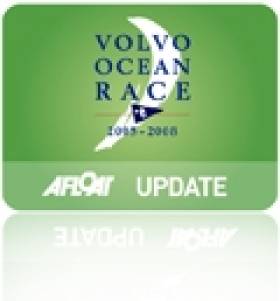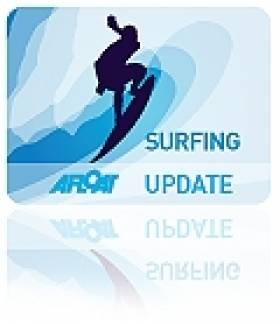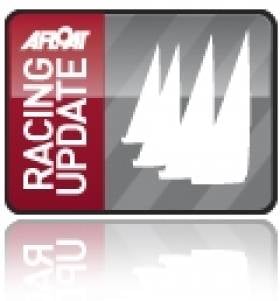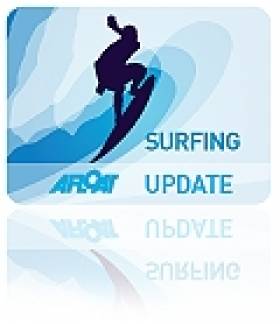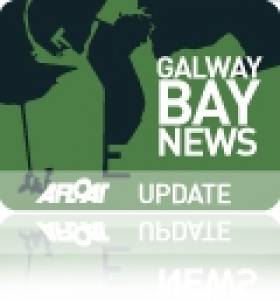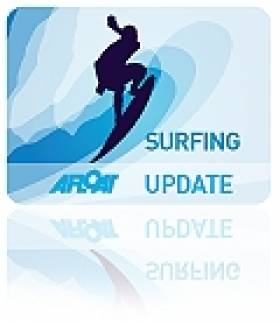Displaying items by tag: windsurfing
#TRY BOATING – As well as the Round the World Racers on show at the Volvo Ocean Race 2011- 2012 Grand Finale in Galway (30th June to 8th July 2012) there's also a chance to get on the water have a try at Sailing, Windsurfing, Paddle Boarding, Sea kayaking and Water Polo.
Get on board a Galway Hooker, Donegal Drondheim, Achill Yawl and Arab Dhow. See what it's like on board a modern racer cruiser. Accessible sailing for those with restricted mobility are also catered for.
Volvo Youth Academy
• Try Sailing on a Ludic 18 foot sailing dinghy with an experienced local sailor in a safe environment. Just visit the Race village any day 1100 to 1700 and book a place. Free age 10+.
• Website www.volvooceanracegalway.com
Ocean Youth Trust
• Try Sailing on a RS Elite 18 foot sailing keel boat with an experienced local sailor in a safe environment. Just visit the Race village from Wednesday 4th July 1100 to 1900 and book a place. Free age 12+.
• More information from Bronagh Cappa-Campbell email [email protected] telephone 00442890453062. Website www.oyti.org
Galway Bay Sailing Club
• Try Sailing on a Vision 16 foot sailing dinghy with an experienced local sailor in a safe environment. Just visit the Race village any day 1100 to 1700 and book a place. Free Age 10+.
• Tried the sailing want to take the helm then the Taste of Sailing is for you. Then book a place on the half day Taste of Sailing Course and get your Irish Sailing Association certificate.
• Morning and Afternoon Sessions aged 10+.
• Multiple half days can be booked to make up a longer course.
• Take the helm and learn to sail on the 12 foot RS Feva double handed dinghy either on the waters of Lough Atalia or off the beach at the Galway Ocean Sports Club.
• Cost €10 per half day session booking in advanced from Thomas Mills 087 7754514.
• Email [email protected] website www.gbsc.ie or at the Race Village.
Bow Waves
• Try Sailing on a Laser 16 foot sailing dinghy with an experienced local sailor in a safe environment. Just visit the Race village any day 1100 to 1700 and book a place. Free Age 10+.
• Tried the sailing want to take the helm then the Taste of Sailing is for you. The book a place on the half day Taste of Sailing Course and get your Irish Sailing Association (ISA) certificate.
o Morning and Afternoon Sessions aged 10+.
o Multiple half days can be booked to make up a longer course.
o Take the helm and learn to sail on the 12 foot Topper Topaz double handed dinghy either on the waters of Lough Atalia or off the beach at the Galway Ocean Sports Club.
o Cost €10 per half day session booking in advanced by telephone 091560560 or 0878077177.
o Email [email protected] website www.bowwaves.com or at the Race Village
Accessible Sailing
• Sailing session for people with disabilities.
• The Irish Disabled Sailing Association, ISA, GBSC and Even Keel have teamed up to bring a fleet of 7 boats which will cater for different needs.
• Morning and Afternoon Sessions. Free aged 8+.
• Booking in advance by Email [email protected] by telephone 0878800744. Websites www.sailforce.ie, www.sailing.ie, www.gbsc.ie and www.theevenkeel.com
Galway Hooker Association
• Get on board a traditional Galway Hooker to get to know the ropes from the sheets and the canvas from the blocs.
• On the Quay side all week.
• More information from Padraic de Bhaldraithe email [email protected] or telephone 0876591904. Website www.galwayhookerassociation.ie
Rusheen Bay Windsurfing
You prefer to do some sailing standing up the Taste of Windsurfing is for you. Then book a place on the half day Taste of Windsurfing and get your Irish Sailing Association certificate RBW.
o Afternoon sessions weekends and evening Sessions all week.
o Multiple half days can be booked to make up a longer course.
o Stand up and sail on safe waters of Rusheen bay aged 12+.
o Cost €20 per half day session booking in advanced from Danny Mulryan 0862605702.
o Email [email protected] website www.rusheenbay.com or at the Race Village.
Try Sea Kayaking with Burren Outdoor Education Centre and Kayakmor
If you prefer going for a paddle then explore the shore line from the docks to Hare Island in a sea Kayak.
• Morning and Afternoon Sessions with Burren Outdoor Education Centre
o Fee €5 aged 10+ at the Race Village.
o More information from Joanna McInerney 087 2229459
o Email [email protected] website www.burrenoec.com
• Evening Sessions
o Fee €5 aged 10+ at the Race Village.
o More information from Jim Morryissey 087 7565578
o Email [email protected] website www.kayakmor.com
Puma Stand Up Paddle Boarding
You can now go padding standing up Puma are bringing their latest carbon fibre boards for you to try.
• All day sessions aged 12+ free.
• Off the prom at Palmers Rock Salthill.
• More information from Mark Paaluhi of Puma on 00- 310-927-1288
• Email [email protected] website www.puma.com
Corrib Water Polo and Swim Club Try Water Polo
I f you really want to play ball and get up to your neck in water have a go at the try water polo session.
• Wednesday 4th July 1730, aged 15 and under free.
• Must be able to swim a width.
• Kingfisher Club NUIG
• More information from Andy Flanagan
• Email [email protected]
Windsurfers Must Make Way for Kites at 2016 Olympics
#KITESURFING - Windsurfers have vowed to battle to overturn the decision to cut their sport from the Olympic Games in 2016 in favour of kitesurfing.
As the Independent reports, kitesurfing has been given two medal events at the 2016 games in Rio de Janeiro, following a mid-term meeting of the International Sailing Federation (ISAF) in Italy.
"I am raw, sore, and shell-shocked by the decision," said Rory Ramsden, secretary of the RSX board association, who was also said to be rocked by the turning of the tide against windsurfing at the emotionally charged meeting.
Ireland's John Crebbin was among those who gave impassioned speeches in favour of kitesurfing before the board voted 19-17 in favour of the relatively new discipline - a decision strongly supported by the USA, Bulgaria, Greece and even windsurfing stalwarts Spain.
The French contingent, meanwhile, was reportedly "devastated" at the news.
A two-thirds majority would be required by the windsurfing lobby to overturn the decision at the ISAF’s annual general meeting in November.
The Independent has more on the story HERE.
#WINDSURFING - Ireland's windsurfers have been set with the challenge - find the strongest storm conditions for the ride of their lives.
The Red Bull Storm Chase 2012 will see 10 of the world’s best windsurfers take part in what the energy drinks brand describes as the most challenging windsurfing contest of all time, as they sail willingly into force 10 winds and monster surf to match.
Suggestions for venues opened on 1 May at redbullstormchase.com - and no doubt the incredible storm surges off Mullaghmore Head will be at the top of Irish lists.
Come July, amateurs and professionals alike from around can register to take part, with a community vote deciding the 10 finalists. Then from August to November, the global hunt for the storms begins, with the field gradually narrowing down to determine the victor.
"Red Bull Storm Chase gives us a dream contest," said PWA World Tour head judge head judge Duncan Coombs. "We’ll travel to the storm instead of waiting for it to find us. We can expect to pull off a competition in the most extreme wind and wave conditions, in new found places.
"We will do our best to push the boundaries of competition and to explore the world’s most radical conditions."
'The Rules of Racing' Lecture in Castlebar This Thursday
#RACING - Mayo Sailing Club's winter series of lectures continues this Thursday 23 February with a talk by Ed Alcock on 'The Rules of Racing'.
Alcock is racing manager of the Irish Sailing Association (ISA), and his lecture will outline the laws that govern racing by windpower on the water in Ireland, covering classes from yachts and dinghies to windsurfing, kitesurfing and more.
Topics to be covered include rights and obligations on the water, giving way, keeping clear, red flags and protest forms.
Sailors of all craft are invited to attend the evening, and anyone wanting to get involved in racing is also welcome, especially with the 2012 racing season only eight weeks away.
Alcock's talk takes place this Thursday at 7.30pm in GMIT Castlebar. The Galway Advertiser has more HERE.
Van Gelderen Claims Irish Speed Sailing Title for 2011
#WINDSURFING - Oisín van Gelderen is all but confirmed as Irish Speed Sailing Champion for the second year running.
His national record speed (44.23 knots by 5x10 second average and 43.96 knots over 500m) puts him far ahead of his nearest competition in the rankings.
But his competitive spirit would not let him rest on his laurels.
"Ever since setting that record in February, I have been trying to beat it," he said, "and we had a really good day on Thursday in Dungarvan."
Though he did not beat his averages, he did set a new Irish record for peak speed at 47.89 knots (verification pending).
Van Gelderen dedicated his previous national title win to to the memory of Surfdock founder Alan Harris and Irish 500m speed record holder John Kenny, who both passed away in 2010.
Meanwhile, his Surfdock teammate Noelle Doran has taken the women's title for 2011 with a very impressive set of times for the year.
Her Irish women's peak record of 38.17 knots was complemented by third overall place for 2011 by 5x10 second average and first in the world over 500m.
"I'm so delighted for her," said Van Gelderen. "She had a nasty injury a few years ago, where she dislocated her hip while windsurfing. The resulting nerve damage put a stop to her competing in Waves and Freestyle, where she had multiple national titles."
Windsurfer Caught Out by High Winds in Galway Bay
The crew of Galway's RNLI lifeboat were alerted at 4pm on Sunday afternoon after the windsurfer had been caught out by strong north-westerly winds. The man was found uninjured and taken to safety.
Galway RNLI warns that high winds can come up fast in Galway Bay, which can cause difficulties for even experienced sailors or windsurfers.
Mikey Clancy Returns to Windsurfing Tour
Irish windsurfer Mikey Clancy is returning to the Professional Windsurfers' Association World Tour.
Sailing.ie reports that Clancy will compete at the World Cup Wave event in Pozo, Gran Canaria from 5-10 July before moving on to the PWA event in El Medano, Tenerife from 14-20 July.
Clancy has made a good recovery since a serious ankle injury almost ruled him out of a professional career in windsurfing.
Later in the year the PWA tour moves onto Denmark and Germany before the final event takes place in Cape Verde.
For more details see Mikey Clancy's official website HERE.
Oisín van Gelderen Takes Speed Sailing Title
Oisín van Gelderen has won the Irish Speed Sailing Championship for 2010 after a phenomenal season.
The Afloat.ie/Irish Independent Sailor of the Month for September 2010 had a clean slate of results for the year, posting the fastest speeds over 500m and by 10-second average.
But the highlight of his year was undoubtedly his personal record-breaking speed trials in West Kirby, near Liverpool (SEE VIDEO BELOW) where he reached a maximum speed of 47.17 knots (87.36 kmph).
"I am looking forward to 2011, and hope to improve my speeds, and spend a lot more time back in the waves this year too," he said.
Van Gelderen dedicated his title win to the memory of Surfdock founder Alan Harris and Irish 500m speed record holder John Kenny, who both passed away in 2010.
French Kite Surfer Sets New World Speed Sailing Record
French kite surfer Alex Caizergues set a New World Speed Sailing Record at 54.10 knots during his first run at this week's Luderitz Speed Challenge event earlier today in Namibia. (SCROLL DOWN FOR VID BELOW)
The event renowned for its super high winds also saw five new national records set. (see below)
The battle for the title of "the fastest speed sailor in the world" is far from over though with more big winds forecast in Luderitz this week and next it looks certain Caizergues new record time could yet be beaten.
Kite Surfing:
USA - Rob Douglas, 51.88
Namibia - Stefan Metzger 45.02
New Zealand - Gavin Broadbent, 50.93
French Womens National record - Charlotte Consorti, 45.23
Australia -Tim Pumpa, 46.78 (best kite speed record performance)
Windsurfing:
Sweden -Anders Bringdal, 44.80.
U.K - Zara Davis, 36.99, Female World performance with Production Board
Sebastien Cattelan from France is placed 2nd in the world speed sailing rankings at 52.33 knots.


























